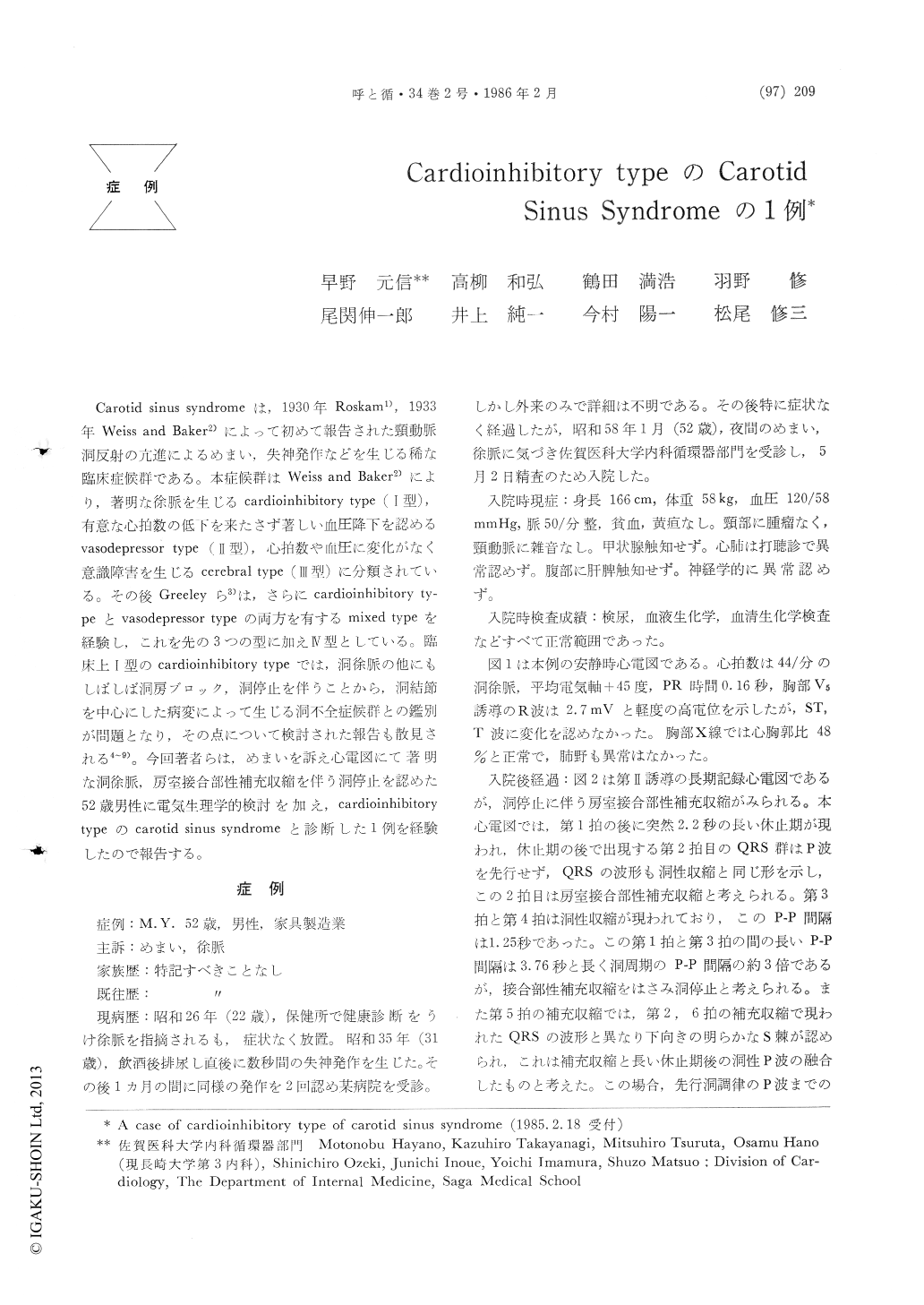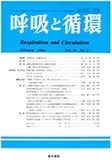Japanese
English
- 有料閲覧
- Abstract 文献概要
- 1ページ目 Look Inside
Carotid sinus syndromeは,1930年Roskam1),1933年 Weiss and Baker2)によって初めて報告された頸動脈洞反射の亢進によるめまい.失神発作などを生じる稀な臨床症候群である。本症候群はWeiss and Baker2)により,著明な徐脈を生じるcardioinhibitory type (I型),有意な心拍数の低下を来たさず著しい血圧降下を認めるvasodepressor type(II型),心拍数や血圧に変化がなく意識障害を生じるcerebral type(III型)に分類されている。その後Greeleyら3)は,さらに cardioinhibitory ty—peとvasodepressor typeの両方を有するmixed typeを経験し,これを先の3つの型に加えIV型としている。臨床上I型のcardioinhibitory typeでは,洞徐脈の他にもしばしば洞房ブロック,洞停止を伴うことから,洞結節を中心にした病変によって生じる洞不全症候群との鑑別が問題となり,その点について検討された報告も散見される4〜9)。今回著者らは,めまいを訴え心電図にて著明な洞徐脈,房室接合部性補充収縮を伴う洞停止を認めた52歳男性に電気生理学的検討を加え,cardioinhibitory typeのcarotid sinus syndromeと診断した1例を経験したので報告する。
A 52 years old man was admitted to our hospital because of dizziness and bradycardia. His ECG show-ed sinus bradycardia, sinus arrest and sinoatrial block associated with AV junctional escape beats. Right carotid sinus stimulation produced a 5.4 sec-ond ventricular asystole and decrease of systolic blood pressure of 45mmHg. The hyperactive caro-tid reflex by carotid sinus stimulation disappeared when 1mg of atropine was administered intrave-nously. These findings made convincingly the diag-nosis of cardioinhibitory type of carotid sinus syn-drome. He had a normal corrected sinus nodal recovery time (150ms) after atropine of 1mg. He was given cardioactive drug of orciprenaline sulfate, 60mg, and has been free of symptom.

Copyright © 1986, Igaku-Shoin Ltd. All rights reserved.


